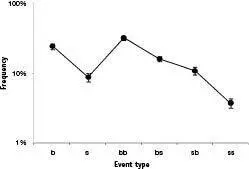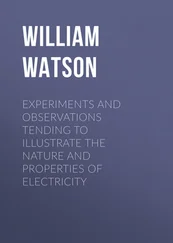Mark Changizi - Harnessed - How Language and Music Mimicked Nature and Transformed Ape to Man
Здесь есть возможность читать онлайн «Mark Changizi - Harnessed - How Language and Music Mimicked Nature and Transformed Ape to Man» весь текст электронной книги совершенно бесплатно (целиком полную версию без сокращений). В некоторых случаях можно слушать аудио, скачать через торрент в формате fb2 и присутствует краткое содержание. Год выпуска: 2011, Издательство: Perseus Books Group, Жанр: Старинная литература, на английском языке. Описание произведения, (предисловие) а так же отзывы посетителей доступны на портале библиотеки ЛибКат.
- Название:Harnessed: How Language and Music Mimicked Nature and Transformed Ape to Man
- Автор:
- Издательство:Perseus Books Group
- Жанр:
- Год:2011
- ISBN:нет данных
- Рейтинг книги:5 / 5. Голосов: 1
-
Избранное:Добавить в избранное
- Отзывы:
-
Ваша оценка:
- 100
- 1
- 2
- 3
- 4
- 5
Harnessed: How Language and Music Mimicked Nature and Transformed Ape to Man: краткое содержание, описание и аннотация
Предлагаем к чтению аннотацию, описание, краткое содержание или предисловие (зависит от того, что написал сам автор книги «Harnessed: How Language and Music Mimicked Nature and Transformed Ape to Man»). Если вы не нашли необходимую информацию о книге — напишите в комментариях, мы постараемся отыскать её.
Harnessed: How Language and Music Mimicked Nature and Transformed Ape to Man — читать онлайн бесплатно полную книгу (весь текст) целиком
Ниже представлен текст книги, разбитый по страницам. Система сохранения места последней прочитанной страницы, позволяет с удобством читать онлайн бесплатно книгу «Harnessed: How Language and Music Mimicked Nature and Transformed Ape to Man», без необходимости каждый раз заново искать на чём Вы остановились. Поставьте закладку, и сможете в любой момент перейти на страницу, на которой закончили чтение.
Интервал:
Закладка:

Figure 11. The freqency of the structure types found in words across 18 widely diverse languages (listed in the legend of Figure 9). (Standard error bars shown. See Appendix for details.)
To estimate how common these simple event types are in nature, students Elizabeth Counterman, Kyle McDonald, and Romann Weber counted the kinds of events occurring in a wide variety of videos. In deciding upon the kinds of videos to sample, we were not especially interested in having videos of, say, the savanna. Recall our discussion in the previous chapter, where we observed that there are “hard cores” of nature likely found in most or all habitats with solid objects crashing about. In choosing twenty videos from which to enumerate solid-object physical events, we simply aimed for a variety of scenarios in which solid-object physical events occur, including cooking, children playing, family gatherings, assembly instructions, and acrobatics. Each student acquired data on the events occurring, and did so using only the visual modality (that is, the videos were on mute); this helped to deal with a worry that our auditory systems are biased by speech so that we hear speechlike structure in events (akin to seeing faces in clouds). The three observers identified an average of 650 events across the 20 videos. Figure 12 shows the average results for the videos as a dotted line, overlaid on the language data from Figure 11. One can see the close similarity in the plots. (Notice that a simple model assuming hits are more common than slides does not explain why bs occurs more often than sb in the language data.)

Figure 12. The relative frequency of simple event types in videos and in language. One can see their considerable similarity. (Standard error bars shown. See Appendix for details.)
Again, we find the signature of solid-object physical events—of nature—in spoken language! Our final story in this chapter on speech concerns the sounds of speech above the level of words: the structure of whole phrases and sentences.
Unresolved Questions
Earlier in the chapter I remarked on how audition is nature’s more terse modality, only speaking up when there’s an event. In real life, though, there can often be “event overload.” I’m sitting at an airport right now, and I just counted 30 distinct sound events occurring around me over the last 30 seconds. How can we possibly pick out the sounds that matter to us amongst all the noise? There are , in fact, auditory cues that can tell an observer whether an event is relevant to him or her. In particular, these cues can tell the observer that “an event you should pay attention to is coming.”
The most obvious such auditory cue is loudness. As a sequence of events nears me—be it footsteps, the whir of a whiffle ball, or the siren of a police car—it gets louder. Loudness is also worthy of attention because louder events can sometimes be the more energetic events. The ecological importance of loudness may underlie the role of emphasis in language, the way that more important words or sentences are sometimes spoken more loudly. That louder speech is more important speech is one of those things that is so obvious it is difficult to notice. But its analog in vision is not true—brighter parts of a scene are not the more important parts. Brightness in a scene is usually just a matter of where the sun is, and where it glares off objects. The importance of loudness modulations in speech needs explaining, and the explanation is found in the structure of nature.
In addition to loudness, events in nature have another sound quality that is even more informative: pitch (the musical, note-like quality of sound). The pitch of an event depends not on how close it is to the observer, but on the rate at which it is getting closer to the observer. To understand why, let’s imagine standing next to a passing train, the standard example used to explain the Doppler effect. The main observation is that the pitch of the train’s whistle starts high and changes to low as it passes. More specifically, note that when the train is far away and approaching, its whistle is at a fixed high pitch, that is, a pitch that is not changing. (It is actually falling, but negligibly and imperceptibly.) The pitch only begins falling audibly when the train is very close to passing you. And shortly after the train has passed you, the pitch has dropped to nearly its low point, so that from then on the pitch stays effectively constant and low. This drop in pitch would apply in any scenario where sequences of events are passing us by. It also occurs any time we are moving past noisy objects. Our auditory systems can sense pitch changes on the order of half a percentage of the sound frequency, sufficient for sensing (if not consciously) the pitch changes due to our walking by a source of sound.
The important conclusion of these observations is that a typical sequence of events will tend to have this signature falling pitch (unless headed directly toward you). One might speculate that this is why language has a tendency to signal the approaching end of a sentence with a falling intonation—a drop in pitch. That’s what events typically sound like in nature.
Sequences of events do not always have pitches that fall, however. Pitches can sometimes rise, but special circumstances are required. First, let’s consider what happens if you stand on the railroad tracks rather than beside them. Now the pitch of the train stays the same, right up to the moment that it hits you. Of course, at the instant it hits you, the sound you would be hearing if you were conscious abruptly drops to a lower pitch (because it passes you in a single brain-crushingly short instant), and stays at that pitch as the train moves away. A constant pitch accompanied by increasing loudness is the signature of an impending collision. That same loudness increase, but with a pitch decrease , signals a near miss.
What could make a pitch increase ? Considering the train again, imagine first standing beside the tracks as it approaches, but then walking onto the tracks before it gets there. Because you have moved to a position more directly in the train’s path of motion, the frequency your ears receive from the train will increase as you walk onto the tracks. Alternatively, the pitch would also increase if you stayed off to the side, but the train jumped the tracks and headed toward you at the last moment. A pitch increase is the signature of a sequence of events that is changing its direction in your direction. This is true not only when an approaching sequence of events veers toward you, but also when a receding sequence of events veers so as to begin turning around, perhaps to come back and get you after a miss. An increase in the pitch is, in a sense, more important than loudness. An event might be loud and getting louder, but if its pitch is decreasing, it is not going to hit you. But if an event is not so loud, but has a pitch that is increasing , that means it is aiming itself more toward you (or you are aiming more toward it).
A rising pitch suggests, then, that the sequence of events is not finished. Events are coming your way. Or, if the sequence of events is moving away from you, then a rising pitch means it is beginning to turn around. This unresolved nature of rising pitches may be the reason why rising pitches in many languages tend to indicate a question. The spoken sentence, “Is that the elephant that stepped on your car?” is a request for further speech. And what better way to sound unresolved than to mimic the sound of nature’s unresolved events?
Читать дальшеИнтервал:
Закладка:
Похожие книги на «Harnessed: How Language and Music Mimicked Nature and Transformed Ape to Man»
Представляем Вашему вниманию похожие книги на «Harnessed: How Language and Music Mimicked Nature and Transformed Ape to Man» списком для выбора. Мы отобрали схожую по названию и смыслу литературу в надежде предоставить читателям больше вариантов отыскать новые, интересные, ещё непрочитанные произведения.
Обсуждение, отзывы о книге «Harnessed: How Language and Music Mimicked Nature and Transformed Ape to Man» и просто собственные мнения читателей. Оставьте ваши комментарии, напишите, что Вы думаете о произведении, его смысле или главных героях. Укажите что конкретно понравилось, а что нет, и почему Вы так считаете.












